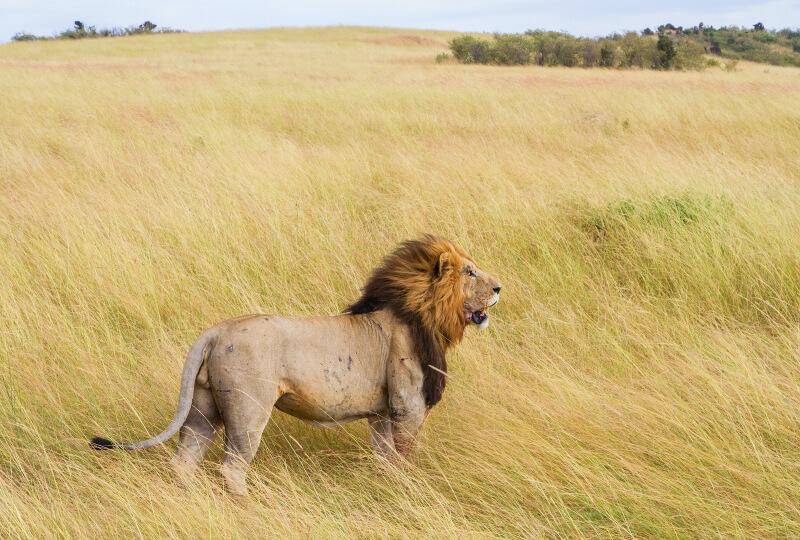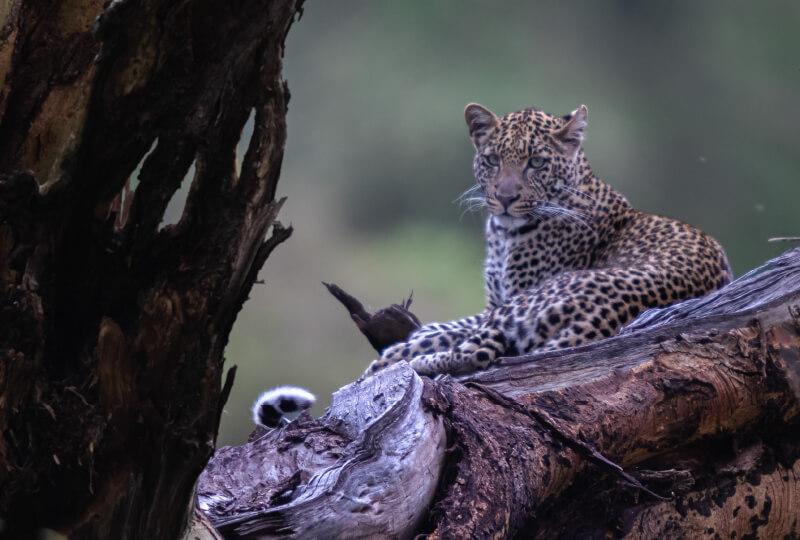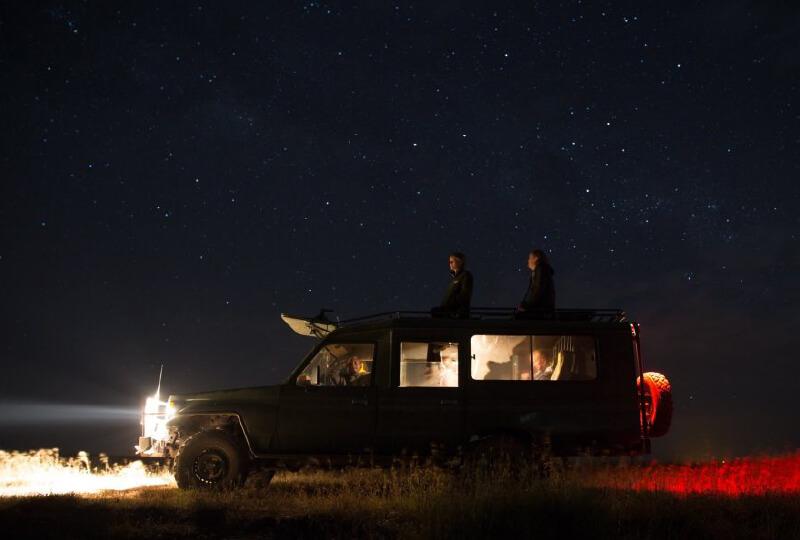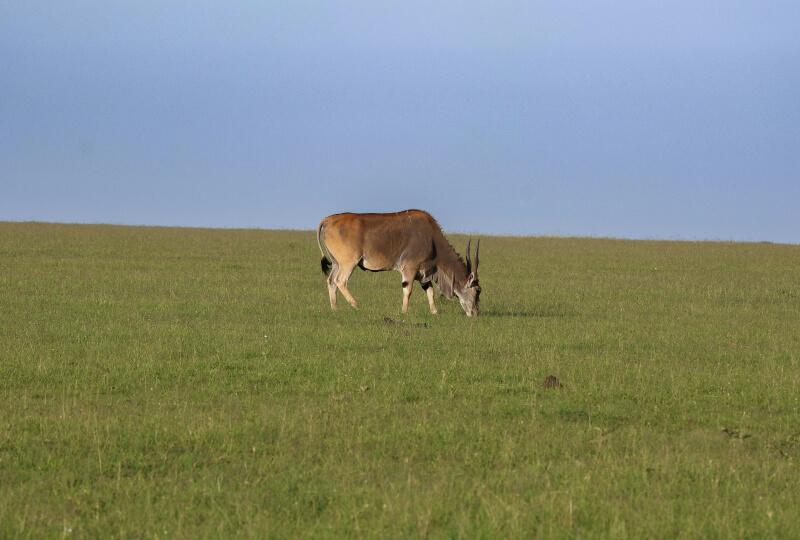When Is The Best Time To Visit Namibia For Safari?
Namibia offers travelers incomparable and mixed experiences, consider it the perfect fit for any Nomadic traveler, with the modern day Windhoek serving as the starting point of many Namibia holiday tours. You can spare some time and take part in short Namibia day tours before exploring the rest of the country’s offerings.
The dry, winter months from May to October are widely regarded by African safari experts as the best months for visiting Namibia for game viewing with the vast red sand dunes of the Sossusvlei salt and clay pan – mesmerizing in the twilight. It doesn’t matter what time of year you experience Namibia, or even the Namibia safari seasons — the country’s epic wildlife and breathtaking beauty is on display year-round.
That said, much of this country is arid but there are still plenty of things to do in Namibia if you are on a tight budget or short of time during your visit.
Month-By-Month Guide On When To Go To Namibia
In this guide, we explain further about the best time of the year to visit Namibia for a safari by month, and apart from sharing with you insights to Namibia’s best safari months, our listed Namibia climate guide is designed to assist you plan your ultimate Namibia holiday vacation.
Namibia can be visited year-round- climate generally dry and pleasant
Travelling to Namibia from June to October (Dry Season) – Best time for wildlife game viewing in all park especially in Etosha
Travelling to Namibia from October to April – Best time for migratory birds and bird viewing
Best weather – April and May
Travelling for Namibia safari in January?
Namibia in January it’s mid-summer heat and temperatures in most parts of the country experiences hot days with average temperatures ranging from 28-33°C (82-91°F) to night-time lows of 14-18°C (57-64°F), with some parts experiencing sharp showers in the late afternoons.
Summer is also the wettest time of year in Namibia, with the summer rains making Etosha National Park green and lush, meaning the wildlife spotting can sometimes be challenging through the dense foliage. January is the low season safaris in Namibia and especially bird watching is excellent during this time of year, for the most part to see the pink plumes of the flamingo. It’s therefore not advisable to travel to the Zambezi Region (previously the Caprivi Strip) during the rainy months, as the area receives the most rainfall in Namibia and roads may be flooded.
Travelling for Namibia safari in February?
Namibia in February experiences warm to hot weather, and similar to January, humid days and dramatic thunderstorms electrify the afternoon sky. You can expect average temperatures between 30-35°C, and up to 40°C in the desert.
If you can tolerate the rain, there’s plenty to enjoy especially if you are taking one of Namibia photographic safaris, the arid landscape becomes green and lush, providing some unique photographic opportunities.
If you choose to travel to Namibia during February we recommend exploring the coastal areas, such as Swakopmund and Walvis Bay, and southern regions as these areas are likely to experience more moderate temperatures and much less rain. Even though most of tourists usually take self-drive safaris in Namibia, keep in mind that the wet months of February to early April can present challenging self-drive conditions as heavy rains and flooding can damage roads, you can easily opt for a Namibia Flying Safari as the perfect option for February.
The month of February is also the calving season in Etosha National Park, and even though it’s a tricky time to spot wildlife, you could have the opportunity to see newborn calves.
Travelling for Namibia safari in March?
March in Namibia is a transitional period, whereby Namibia steadily transitions from the hot and humid summer season to a cooler and drier winter, there is less rainfall in March, but it’s still hot and humid in the day with the nights starting to get cooler, characterized by warm temperatures ranging from 15°C (59°F) to 30°C (86°F), with the possibility of higher temperatures in desert areas.
The wet season gradually comes to an end in March, some days will be humid and rain may follow, often in localised, afternoon thunderstorms, thereby March is not the best month for game viewing, but April is the best time to go to Namibia if you are a passionate photographer – the skies are clear and nature’s canvas beckons.
Travelling for Namibia safari in April?
Namibia in April is predominantly sunny and dry, with average temperatures ranging from comfortable to moderately warm, making this month one of the most enjoyable for traveling in Namibia, safari photographers of all skill and experience levels will find this an excellent month to travel through the varied country where the skies are clear and nature’s canvas summons, offering lush and desert landscapes, attractive cities, and awe-inspiring expanses.
Furthermore, April is considered the shoulder season, a great month to explore the Namib Desert as the air is clear of dust. While the weather is generally good for travel, the conditions aren’t ideal for game viewing, one of the major draws to visiting Namibia in April.
Travelling for Namibia safari in May?
Namibia in May presents the start of winter, there is little to no rainfall during the winter and humidity is low, with daytime temperatures are comfortably warm at 25 to 30°C, while nights can cool down to around 10°C. This is when wildlife start gathering around waterholes when rivers and other water sources dry up and water becomes scarce.
Mai is highly regarded as the best time to visit Namibia, as it marks the start of peak safari season. Expect cloudless blue skies, plenty of sunshine and minimal rainfall throughout the country – the conditions are perfect for game drives.
Travelling for Namibia safari in June?
Namibia in June is predominantly sunny, with clear blue skies providing excellent photographic safari conditions and a great time to spot African wildlife. The nights are getting cold and temperatures can drop dramatically to below 10°C (50°F), while desert areas can experience below freezing conditions. Daytime temperatures are pleasant however, with temperatures in the mid-20°Cs (70°Fs). Wildlife sightings are excellent in Etosha National Park and Ongava Game Reserve in June.
With the dry season in full swing, the weather is pleasant no likelihood of rainfall, the landscape becomes dry, and less dense making it much easier to spot wildlife, a good chance for an exciting luxury safari in Namibia.
Travelling for Namibia safari in July?
Namibia in July is by far the driest and coolest month of the year, with daytime temperatures generally warmer in the northern regions, averaging around 25°C (77°F), but can drop dramatically to as low as 10°C (50°F) at night, meaning you’ll need to pack plenty of warm clothing if you are planning Namibia safaris during this period because game drives in open vehicles can very chilly.
July also marks one of the best times for travelling to Namibia and visiting the game parks since game-viewing in most areas is at its best, especially Etosha National Park.
Travelling for Namibia safari in August?
Namibia in August welcomes the height of winter, characterized by a dry, sunny climate with very little or no rainfall, another fantastic month to visit Namibia with Day time temperatures are still fairly warm (average 20-23°C) although the nights can be very cold (average 6-9°C and even lower in the desert). July and August are the main winter months in the country thus a great time for outdoor desert activities such as wildlife watching, hiking, and exploring the vast desert landscapes.
Take note since this is a very popular time for travelling here, it’s best to book your accommodation in Namibia well in advance.
Travelling for Namibia safari in September?
Namibia in September experiences comfortably warm days as the dry winter season continues, you can expect little to no rain throughout the country.
September is another lovely month and considered an ideal time to travel to Namibia. The weather is warm and dry, with low humidity, keeping a very a pleasant atmosphere for relaxation after a day of exploring. It’s a popular time to visit, but if you want to experience the Etosha National Park or the red dunes of Sossusvlei at their best and most comfortable, don’t hesitate to take this trip to Namibia on September.
Travelling for Namibia safari in October?
October in Namibia is warm-to-hot, marking the last month of Namibia’s winter season. The weather starts to get warmer and there is a chance of rain, but the skies are generally still clear – expect average day time temperatures of 29°C (84°F) and night time temperatures of 15°C, good time for game viewing.
On your list of where to go in Namibia during this time of the month, consider visiting Etosha National Park and Ongava Game Reserve which is scarce during October, meaning that the wildlife is easier to spot because the country is so dry.
Additionally, about the things to do in Namibia during this period, go for whale watching on the coast as southern right, minke and humpback whales pass by the Walvis Bay area on their annual Atlantic migration.
Travelling for Namibia safari in November?
Namibia in November is characterized by warm to hot temperatures, and can be quite unpredictable weather wise. On average, daytime temperatures are above 30°C (86°F), the heat continues to rise by November and it will be very hot; although humidity is still low – however on other days the sky can fill with heavy clouds and you may even experience a dramatic rainfall in the afternoon.
The low season for travel catches up, as the rainy season begins in November, and it becomes cooler across the country.
Travelling for Namibia safari in December?
Namibia in December is characterized by clearer, sunnier skies at the beginning of the month, summer has set in and temperatures increase throughout the country which often give way to brief, short afternoon showers which often don’t last for long leaving the skies clear again by early evening.
If you are in Namibia for Christmas, spend your time at the bone-dry dunes of Sossusvlei, the foggy Skeleton Coast, or embrace the heat and go bird-watching in the Caprivi Strip which is excellent from November to February – during this time, the migrant birds begin to arrive with the rainy season and more than 450 species of birds are recorded in the area.
Given December is also a rewarding time for the low season safaris in Namibia, enjoy the low number of tourists crowds and also lower safari prices during this period. Talking about the top attractions in Namibia, you may start with Etosha National Park where game –viewing is at its best in December.
Ready to Start Planning Your Visit to Namibia?
Not yet close to finding your best time to travel to Namibia? Worry not, chat with someone who’s been there. Get in touch with one of our African safari experts to help tailor-make a trip that’s right for you.

Iconic Masai Mara Safari

Masai Mara & Lake Nakuru

Samburu & Ol Pejeta Safari

Amboseli & Tsavo West & Taita Hills

Samburu & Lake Nakuru




